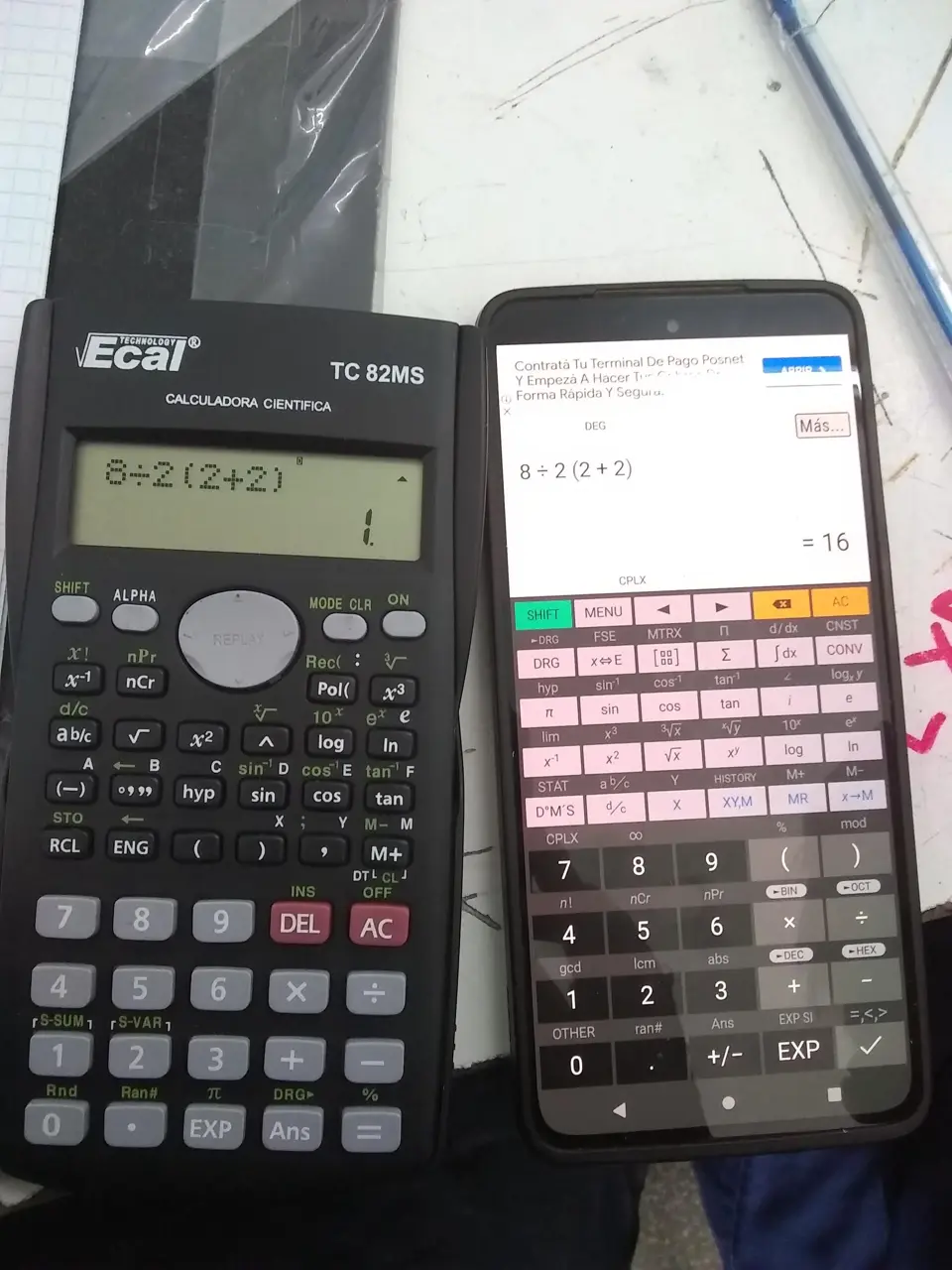this post was submitted on 03 Dec 2023
389 points (95.6% liked)
196
16801 readers
3063 users here now
Be sure to follow the rule before you head out.
Rule: You must post before you leave.
founded 2 years ago
MODERATORS
you are viewing a single comment's thread
view the rest of the comments
view the rest of the comments

You can do this without needing to replace by using a backslash. 1*2 comes from
1\*2.Anyway, the problem with your logic is that it's using rules designed for primary school by one random primary school teacher many decades ago. Not a rigorous mathematical convention.
In real maths, mathematicians frequently use juxtaposition to indicate multiplication at a higher priority than division. Rather than BIDMAS, something like BIJMDAS might work. But that isn't as catchy, and more to the point: it requires understanding of an operation that doesn't get used in primary school, so would be silly to put in to a mnemonic designed to aid probably school children.
Just looked it up. Everything I know is a lie. Thank you, kind stranger on the internet. I’m going to go have an existential crisis, now.
...including the comment you just replied to. Here is a thread with actual textbook references, historical Maths documents, worked examples, proofs, the works.
Actually The Distributive Law is taught in Year 7. The Primary School rule, which doesn't include brackets with coefficients, is only the intermediate step.
It's an actual rule which is centuries old.
It's not multiplication - it's either The Distributive Law or Terms, which are 2 separate rules.
Yes, as I said it's taught in Year 7.
When I was in school, year 7 was primary school.
Anyway, I'm the time that is relevant here is when you've done the various relevant mathematical tools, but haven't yet been exposed to multiplication by juxtaposition. Which I'm fairly sure for me at least was in year 6.
No, the idea of specifically codifying BIDMAS comes from the early 1900s.
I don't know why you're going throughout this thread over multiple hours spamming out your nonsense, but it's wrong. BIDMAS is a convention, and a very useful one, but only because we instinctively know juxtaposition actually comes before explicit multiplication or division, and a rigid primary school application of BIDMAS will lead you to the wrong answer.
Thankfully, I think you know that last part. Because I think that's what you mean when you keep saying "it's called terms". But that, too, is wrong. It's used in terms, for sure. y = 2x^2^ + 91/2)x - 4 contains three terms, the x^2^ term is 2x^2^, etc. But if I then changed the constant term to be 4(2 - 3×5) + 1, all of that would still only be the one term. Terms and multiplication by juxtaposition can work together, but fundamentally refer to entirely different aspects of mathematics. Juxtaposition is a notational thing, while terms are a fundamental aspect of the equation itself.
Oh really? My apologies then. I've only ever heard Year 7 called high school or middle school, never primary school. What country is that in?
I've seen some Year 6 classes do some pre-algebra (like "what number goes in this box to make this true"), but Year 7 is when it's properly first taught. Every textbook I've ever seen it in has been Year 7 (and Year 8, as revision).
Also, it's not "multiplication by juxtaposition", since it's not multiplication - it's The Distributive Law - which is Distribution - and/or Terms - which is a product, which is the result of a multiplication.
The order of operations rules are older than that - we can see in Lennes' letter (1917) that all the textbooks were already using it then, and Cajori says - in 1928 - that the order of operations rules are at least 300 years old (which now makes them at least 400 years old).
If you're talking about when was the mnemonic BIDMAS made up, that I don't know, but the mnemonics are only ways to remember the rules anyway, not the actual rules.
I'm a Maths teacher, that's what we do. :-)
Only if the bracketed term has a coefficient (welcome to how Texas Instruments gets the wrong answer), which is never the case in Primary School questions - that's taught in Year 7 (when we teach The Distributive Law).
Terms come before operators, and we never call it juxtaposition, because The Distributive Law is also what people are calling "strong juxtaposition" (and/or "implicit multiplication"), but is a separate rule, so to lump 2 different rules together under 1 name is where a lot of people end up going wrong. There's a Youtube where the woman gets confused by a calculator's behaviour and she says "sometimes it obeys juxtaposition and sometimes it doesn't" (cos she lumped those 2 rules together), and I for one can see clear as day the issue is it's obeying Terms but not obeying The Distributive Law (but she lumped them together and doesn't understand these are 2 separate behaviours).
But that's my point, there's no such thing as "multiplication by juxtaposition". A Term is a product, which is the result of a multiplication.
If a=2 and b=3 then...
axb=2x3 - 2 terms
ab=6 - 1 term
In the mnemonics "Multiplication" refers literally to multiplication signs, and nothing else. The Distributive Law is done as part of solving Brackets, and there's nothing that needs doing with Terms, since they're already simplified (unless you've been given some values for the pronumerals, in which case you can substitute in the values, but see above for the correct way to do this with ab, though you could also do (2x3), but absolutely never 2x3, cos then you just broke up the term, and get the wrong answer - brackets can't be removed unless there is only 1 term left inside. People writing 2(3)=2x3 are making the same mistake).